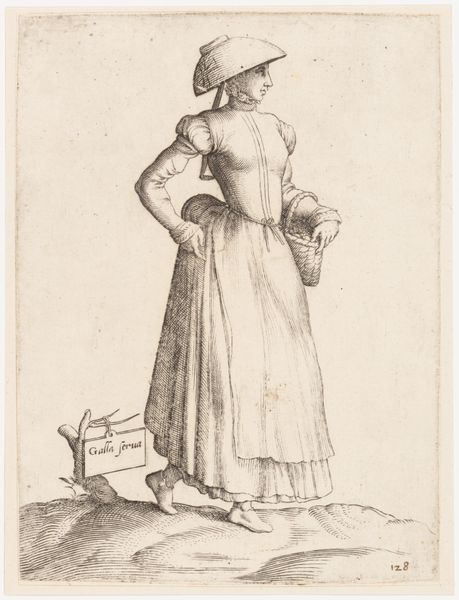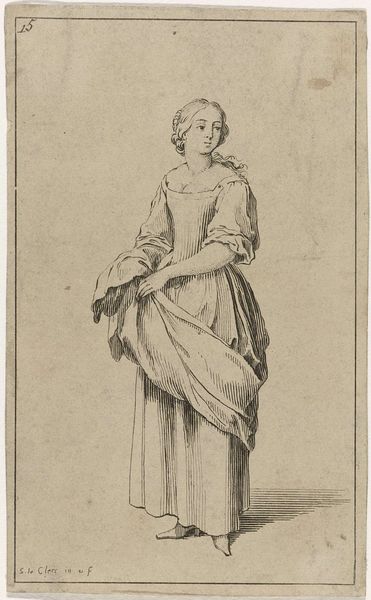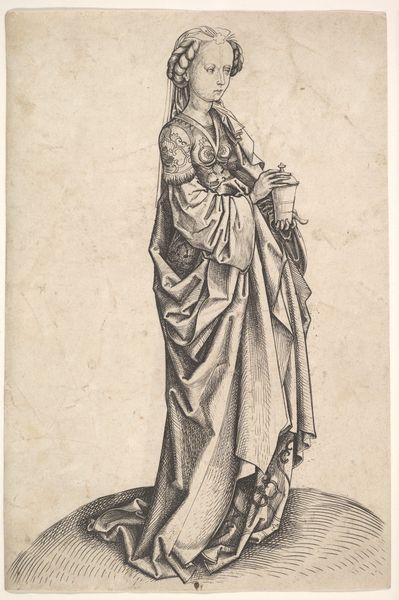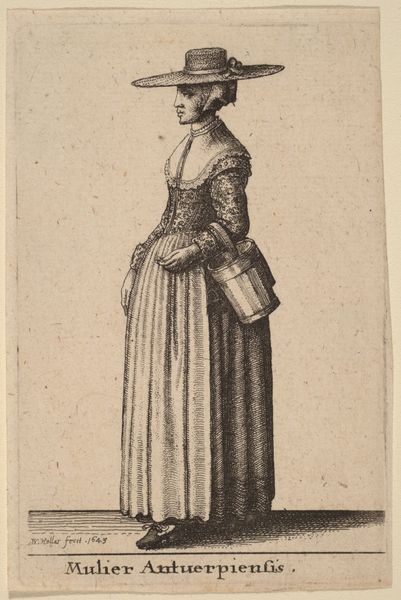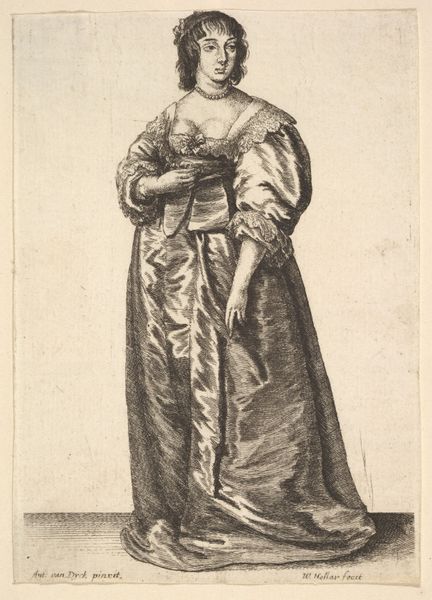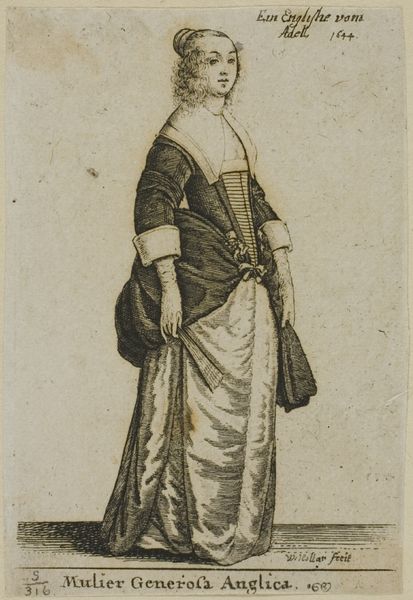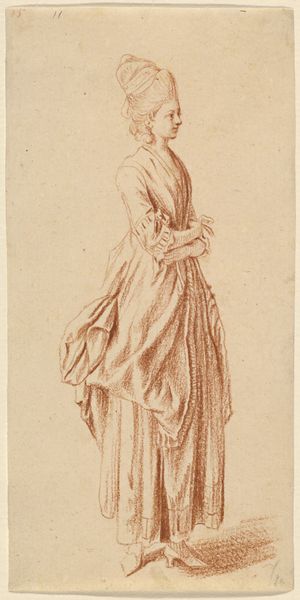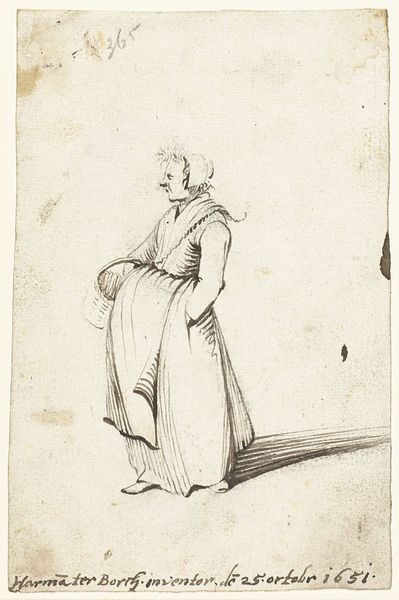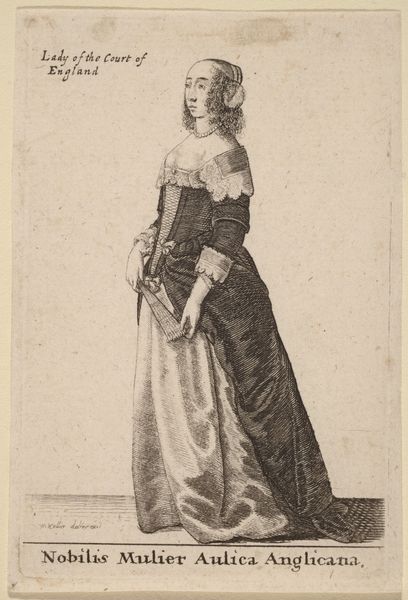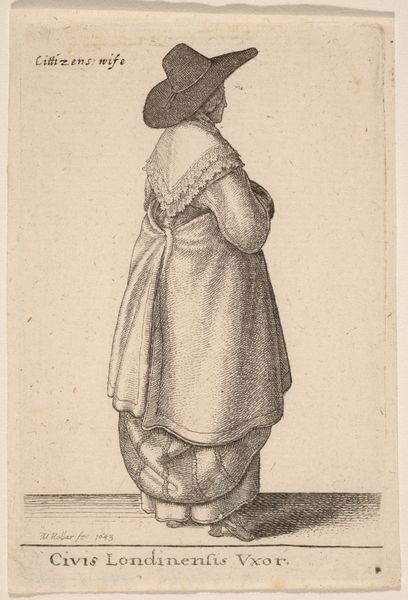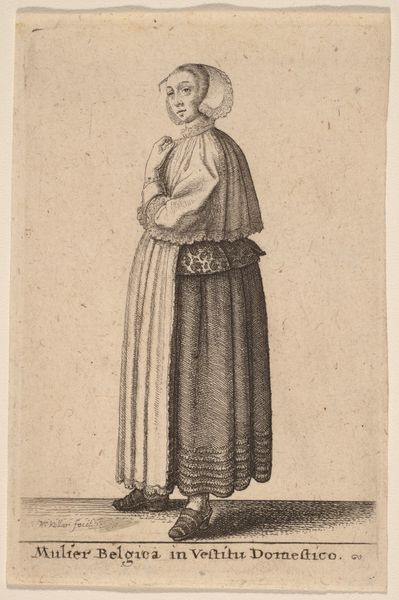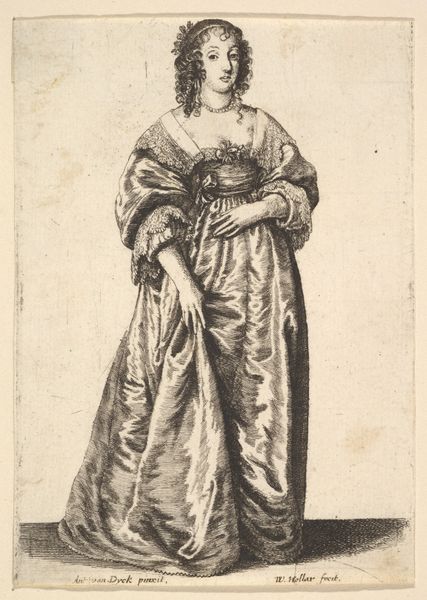
print, engraving
#
portrait
#
baroque
# print
#
figuration
#
engraving
Copyright: National Gallery of Art: CC0 1.0
Editor: Here we have Wenceslaus Hollar’s “Ciuis Londinensis Melioris Qualitatis Vxor,” an engraving from 1643. She's identified as a "Merchant's wife of London," and her clothes seem to make a bold statement about status. I'm wondering about the social implications. What can we unpack from this portrait about 17th-century London society? Curator: The details in her dress – the lace, the fullness of the skirt, even the hat – signal wealth and belonging to a rising merchant class. But beyond that, consider the context: 1643 was a tumultuous time during the English Civil War. Think about the function of portraiture then. Whose stories are prioritized, and why immortalize this particular woman at this moment? Editor: That’s interesting. I hadn't really connected her image with the political landscape. Would a print like this have been used for propaganda, or something similar? Curator: Not directly in the way we might think of propaganda today. But imagery, especially portraits, played a critical role in constructing identity and disseminating social values. A print like this circulated images of wealth and success, reinforcing certain social structures, even during wartime upheaval. To what extent do you think such prints democratized or consolidated images of power? Editor: That makes me think about the accessibility of images. Was this something only the wealthy merchant class would have had access to? Or could other parts of London society also obtain or see this portrait somehow? Curator: It likely circulated among those with means, solidifying their status. The deliberate visual encoding of status becomes an important political act through its consumption, reflecting power in image, in turn stabilizing an already shifting power dynamic within the city. Editor: That really reframes how I see this portrait. It's not just a picture of a woman; it's a statement about power and society during a pivotal moment in history. Curator: Precisely. It pushes us to question whose stories get told and how those stories contribute to the larger narratives of history.
Comments
No comments
Be the first to comment and join the conversation on the ultimate creative platform.
